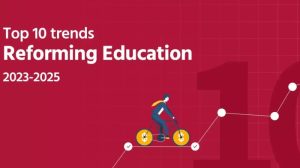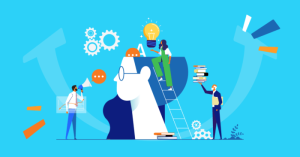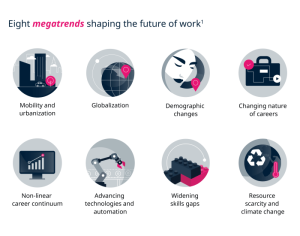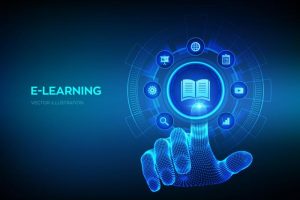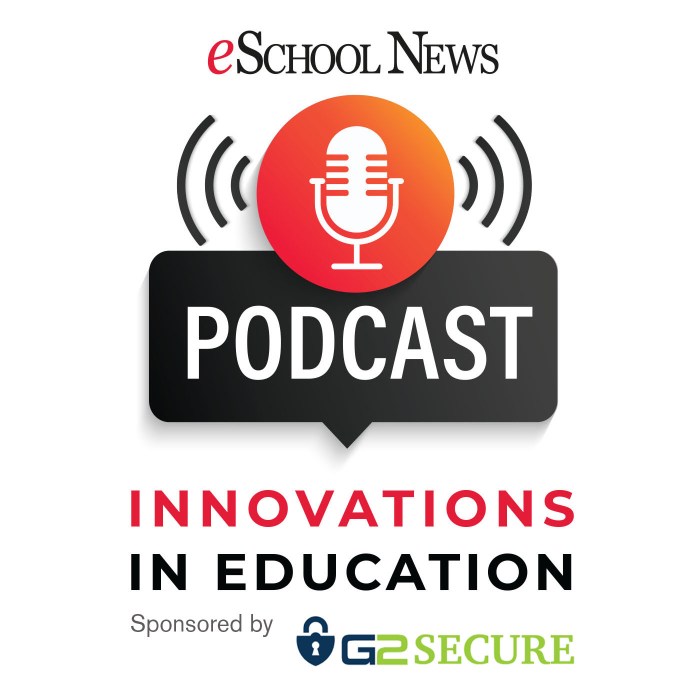
Get ready to dive into the exciting world of EdTech innovations in education! This topic promises a captivating exploration of how technology is reshaping traditional educational methods and enhancing the learning experience for students of all ages. Brace yourself for a journey filled with insights and examples that showcase the power of EdTech in revolutionizing the way we learn.
As we uncover the various types of EdTech tools, delve into the benefits they bring to education, and explore the challenges faced in implementing these innovations, you’ll gain a deeper understanding of the transformative impact of technology on the educational landscape.
Overview of EdTech Innovations in Education
EdTech innovations in education refer to the use of technology to enhance and revolutionize traditional educational practices. With the integration of technology in the classroom, educators can deliver content in more interactive and engaging ways, catering to the diverse learning styles of students.
Examples of Technology Transforming Education
- Online Learning Platforms: Virtual classrooms and online resources allow students to access educational materials anytime, anywhere.
- Interactive Whiteboards: These tools enable teachers to create dynamic lessons with multimedia elements, making learning more engaging.
- Adaptive Learning Software: Programs that adjust to the individual needs of students, providing personalized learning experiences.
Impact of EdTech on Student Learning Outcomes
- Improved Engagement: Technology makes learning more interactive, increasing student participation and motivation.
- Enhanced Collaboration: Online tools facilitate communication and collaboration among students, fostering a sense of community.
- Data-Driven Decision Making: EdTech allows educators to track student progress and adjust teaching strategies accordingly for better outcomes.
Role of EdTech in Promoting Personalized Learning Experiences
- Customized Learning Paths: Technology enables students to learn at their own pace, focusing on areas where they need more help.
- Adaptive Assessments: Tools that adapt to students’ responses provide real-time feedback and help identify areas for improvement.
- Individualized Feedback: EdTech allows teachers to provide personalized feedback to students, addressing their specific learning needs.
Types of EdTech Tools Used in Education

Technology has revolutionized the way we learn and teach, with a wide range of EdTech tools being used in educational settings to enhance the learning experience.
Virtual Reality (VR) and Augmented Reality (AR)
Virtual Reality (VR) and Augmented Reality (AR) are two cutting-edge technologies that are transforming the way students interact with educational content. VR immerses users in a completely digital environment, while AR overlays digital elements onto the real world. These technologies provide students with immersive and engaging learning experiences, allowing them to explore subjects in a more interactive and hands-on way.
Artificial Intelligence (AI) in Adaptive Learning Platforms
Artificial Intelligence (AI) plays a crucial role in adaptive learning platforms by personalizing the learning experience for each student. AI algorithms analyze student performance data to identify their strengths and weaknesses, allowing educators to tailor lessons to meet individual needs. This adaptive approach helps students learn at their own pace and in a way that suits their unique learning style.
Interactive Educational Apps and Platforms
There is a wide range of interactive educational apps and platforms available that cater to different subjects and age groups. These apps engage students through gamification, quizzes, interactive lessons, and simulations, making learning fun and engaging. Some popular examples include Kahoot!, Duolingo, and Khan Academy, which offer interactive and engaging content to help students grasp complex concepts in a more enjoyable way.
Benefits of EdTech in Education
Incorporating Educational Technology (EdTech) in classrooms offers a wide range of advantages that can enhance the learning experience for both students and teachers.
Promotes Collaboration and Engagement
- EdTech tools provide a platform for students to collaborate on projects and assignments, fostering teamwork and communication skills.
- Interactive learning activities and multimedia content engage students, making the learning process more enjoyable and effective.
- Virtual classrooms and online discussion forums facilitate communication between students and teachers, even outside of regular class hours.
Caters to Diverse Learning Styles and Abilities
- Personalized learning platforms adapt to individual student needs, allowing for customized learning paths and pacing.
- Visual, auditory, and kinesthetic learners can benefit from a variety of multimedia resources and interactive simulations.
- EdTech tools offer accessibility features for students with learning disabilities, ensuring inclusivity in the classroom.
Improves Teacher Efficiency and Effectiveness
- Automated grading systems save time for teachers, allowing them to focus on providing personalized feedback and support to students.
- Data analytics and assessment tools help teachers track student progress, identify areas for improvement, and adjust teaching strategies accordingly.
- Professional development resources and online training modules enable teachers to enhance their skills and stay updated on the latest educational trends.
Challenges and Considerations in Implementing EdTech
Integrating educational technology (EdTech) in teaching comes with its own set of challenges that educators need to address. These challenges range from resistance to adoption to concerns about privacy and security.
Common Challenges Faced by Educators
- Lack of training and support: Educators may struggle with using new technology effectively due to insufficient training and support.
- Resistance to change: Some educators may be hesitant to integrate EdTech into their teaching methods, preferring traditional approaches.
- Technological infrastructure limitations: Schools with inadequate technological infrastructure may find it challenging to implement EdTech tools effectively.
Importance of Digital Literacy Skills
- For Educators: Teachers need to possess digital literacy skills to effectively use EdTech tools in their teaching and facilitate student learning.
- For Students: Developing digital literacy skills is essential for students to navigate online resources, collaborate digitally, and critically assess information.
Strategies for Overcoming Resistance to EdTech Adoption
- Provide ongoing training and support: Educators should receive continuous training to build their confidence and competence in using EdTech tools.
- Highlight the benefits: Emphasizing the positive impact of EdTech on student engagement, learning outcomes, and classroom efficiency can help in overcoming resistance.
- Encourage collaboration: Creating a supportive environment where educators can share best practices and collaborate on integrating EdTech can foster adoption.
Privacy and Security Concerns in EdTech Tools
- Data protection: Educators need to ensure that student data collected by EdTech tools is secure and protected from unauthorized access or misuse.
- Compliance with regulations: Schools must comply with data privacy regulations such as GDPR and COPPA when using EdTech tools to protect student information.
- Risk of cyber threats: Educators need to be aware of potential cybersecurity risks associated with using EdTech tools and take measures to mitigate these risks.
Future Trends in EdTech Innovations
The future of EdTech is poised to bring about significant advancements and transformations in the field of education. As technology continues to evolve at a rapid pace, the role of EdTech in shaping the way we learn and teach is becoming increasingly crucial.
Artificial Intelligence in Education
Artificial Intelligence (AI) is expected to play a major role in revolutionizing education in the coming years. AI-powered tools can provide personalized learning experiences, adaptive assessments, and intelligent tutoring systems that cater to the individual needs of students. By analyzing vast amounts of data, AI can help educators make informed decisions and enhance student outcomes.
Virtual and Augmented Reality
Virtual Reality (VR) and Augmented Reality (AR) have the potential to transform traditional classroom settings into immersive learning environments. These technologies can provide students with hands-on experiences, simulations, and interactive activities that enhance engagement and retention. VR and AR can also help bridge the gap between theoretical knowledge and practical application.
Digital Inclusion and Equity
One of the key challenges in education is the digital divide, where not all students have equal access to technology and online resources. EdTech innovations are increasingly focused on addressing this issue by promoting digital inclusion and equity. Initiatives such as providing devices, internet connectivity, and digital literacy training can help ensure that all students have access to high-quality education.
Professional Development for Educators
Continuous professional development for educators is essential in leveraging EdTech advancements effectively. As new technologies emerge, educators need to stay updated and equipped with the necessary skills to integrate these tools into their teaching practices. Training programs, workshops, and certifications can help educators enhance their digital literacy and pedagogical skills.
EDUCATION AND REFERENCE EDUCATION AND TRAINING
In the realm of EdTech, the concepts of education and training play distinct yet interconnected roles. While education focuses on the broader aspects of acquiring knowledge and developing critical thinking skills, training is more targeted towards specific skill-building and practical application in a particular field or job role.
EdTech in Formal Education Settings
In formal education settings, EdTech is utilized to enhance the learning experience for students across various subjects and grade levels. Examples include interactive whiteboards, educational apps, online learning platforms, virtual reality simulations, and adaptive learning software. These tools cater to different learning styles, promote engagement, and provide personalized learning opportunities for students.
Role of EdTech in Corporate Training and Professional Development
In the corporate world, EdTech plays a crucial role in facilitating training programs and professional development initiatives for employees. Virtual classrooms, microlearning modules, gamified training simulations, and AI-driven assessment tools are commonly used to deliver training efficiently and cost-effectively. EdTech enables organizations to upskill their workforce, improve employee performance, and adapt to the rapidly changing demands of the market.
Transformation of Skills Acquisition and Knowledge Dissemination
EdTech is transforming the way skills are acquired and knowledge is disseminated in various educational and training environments by providing access to high-quality content, promoting collaborative learning, and offering personalized learning paths. Through adaptive learning algorithms, real-time feedback mechanisms, and immersive learning experiences, EdTech is reshaping traditional teaching methods and empowering learners to engage with educational content in innovative ways.
Final Wrap-Up

In conclusion, EdTech innovations in education offer a glimpse into a future where learning is dynamic, engaging, and tailored to individual needs. By embracing technology, educators and students alike can unlock a world of possibilities that pave the way for a more interactive and effective learning experience. Stay tuned for more exciting developments in the ever-evolving realm of EdTech!
Q&A
How can EdTech benefit students with diverse learning styles?
EdTech offers personalized learning experiences that cater to different learning preferences, making it easier for students with diverse styles to grasp concepts effectively.
What are some strategies to overcome resistance to EdTech adoption?
Educators can provide training and support, demonstrate the benefits of EdTech, and involve stakeholders in the decision-making process to overcome resistance to adopting technology in education.
What role does artificial intelligence play in adaptive learning platforms?
Artificial intelligence enables adaptive learning platforms to customize content and pacing based on individual student performance, enhancing the learning experience and improving outcomes.
